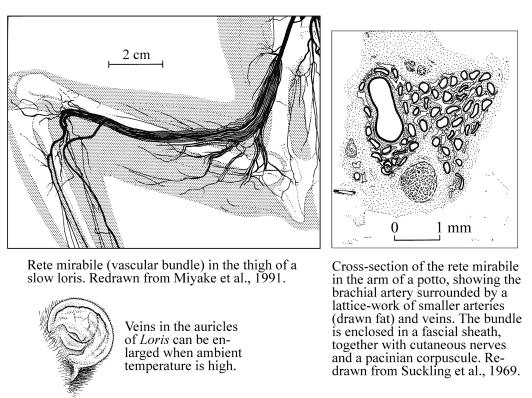

In lorises it is difficult to obtain
blood
samples with a syringe, possibly because of the existence of
specialized
bundles of blood vessels in the limbs, the retia mirabilia.
At Ruhr-University,
therefore, blood samples are obtained with the help of
laboratory-bred,
tropical blood-suckling bugs (Dipetalogaster maxima).
Veins in the
auricles of Loris may be visibly enlarged when ambient
temperature
is high. In connection with multiple small sweat glands found in
the ear
skin (Montagna, Ellis 1960), these veins most probably are
important for
regulation of body temperature. Marking of lorises by cutting
incisions
into the ear rim might therefore be disadvantageous for the
animals.
Sources:
|
Loris
and related species: health
|
Last
amendment: 5 May 2000
|